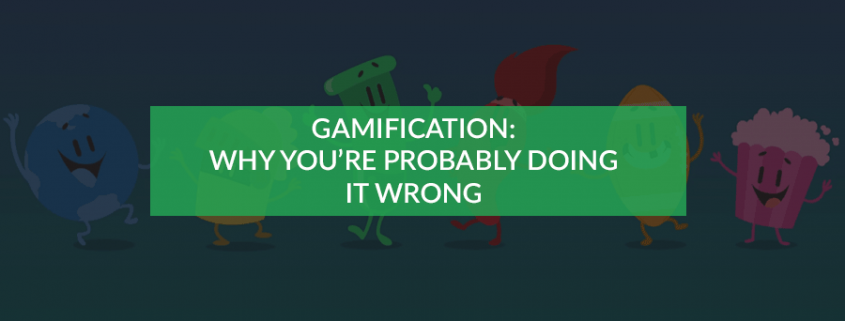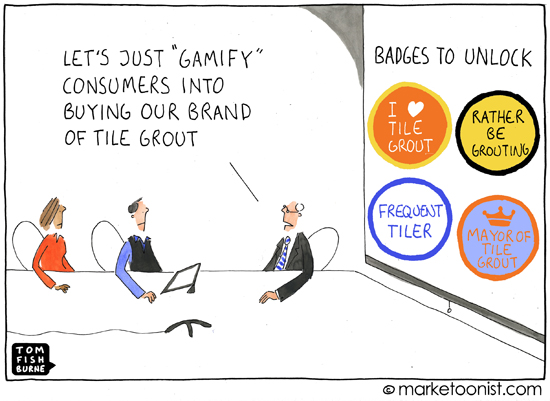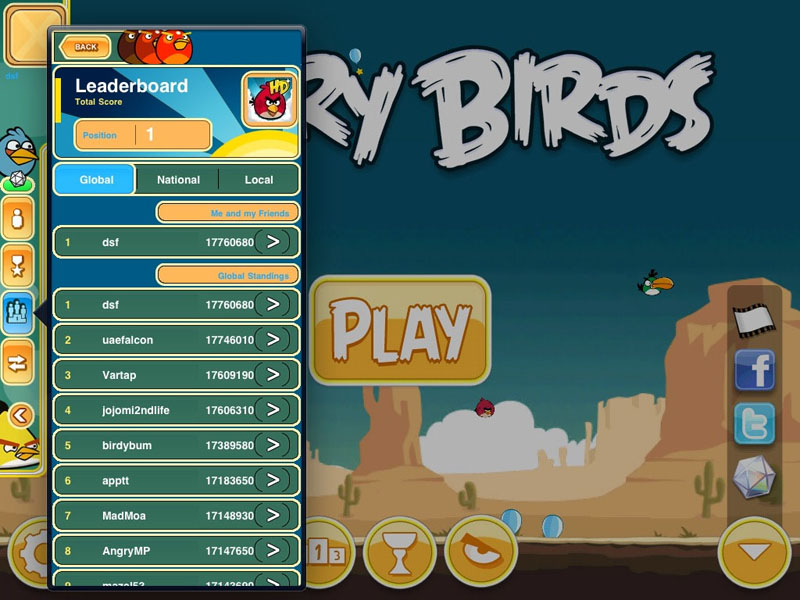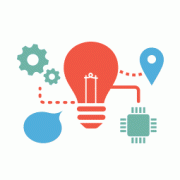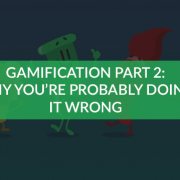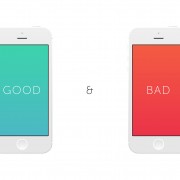Part 1: Gamification (Why You’re Probably Doing It Wrong)
This is part 1/3 in the Buzinga crash course Gamification: How To Gamify Your App For Powerful User Engagement.
Part 2 – 4 Powerful Reward Strategies For Gamifying Mobile Apps
Part 3 – 5 Important Approaches For Gamifying Mobile Apps
If you look up a definition of gamification it’s usually along the lines of “The application of game concepts and mechanics to non-game tasks in order to increase participation and engagement.”
Sounds fairly straightforward? It’s just a game right?
Well, it turns out the point of gamification isn’t exactly to have ‘fun’ nor is it to make a game at all. The ultimate aim is to change users’ behaviour.
We want them to change from occasional users to evangelists.
In the app industry we often get asked to implement gamification techniques in our work.
But the truth is, more often than not, it’s executed poorly and at worst counterproductive.
It doesn’t actually improve user engagement.
The reason is that few people have the knowledge and experience to analyse and deconstruct game mechanics despite how many of us actually play games.
(And don’t think you’re not someone who plays games – Sudoku in the newspaper, a hand of Bridge and even backyard Cricket are all games)
In much the same way that all of us can read a novel but very few of us could be authors, let alone ‘good’ authors, game design often needs training and experience.
(There are several Game Design University degrees around these days).
Since I’ve spent the time completing one of these courses (and adding to my ever growing HECS debt) I can spare you the trouble and break down some of the most common errors in gamification, by using both ‘traditional’ game and non game examples.
Player Types
Using a system commonly used by games designers, called Bartle Types, we can see the scale of different users.  Killers: (Active & People focused): Need to win over other people.
Killers: (Active & People focused): Need to win over other people.
Socialisers: (Passive & People focused): Enjoy time spent with other people and are often people who organise groups and teams.
Achievers: (Active & System focused): Want to complete everything and often set themselves personal goals. The involvement of other people isn’t a necessity.
Explorers: (Passive & System focused): Explorers often want to know ‘how things work’ how they can be manipulated and exploited.
They will often be specialists in a field.
Now keep in mind everyone is a mix of all of them at various times but we tend to gravitate towards 1 quadrant more than others, and they all need each other to survive.
For example, by giving Killers a task that they can improve on and measure against others we increase the engagement for that task.
Killers also actively seek out opportunities to compete. They need PEOPLE and are ACTIVE.
There are opposite ends of both these scales too. Active people seek experiences out and winning is a priority, whereas Passive people are happy to ‘soak it all in’ and participation is their reward.
Some players like having other people involved in their activities and community/group activities are the focus.
On the other hand some people are happy to do solo activities, are interested in how a system works (and where the loopholes are) and personal knowledge is often their focus.
Common Errors in Gamification
Source: Tom-Fisch Burn
Over-Use of Leaderboards
One of the most overused systems in gamifying your app is Leaderboards, where activities are assigned points and the person with the most points is #1 on the board.
This type of ranking hails all the way back to coin operated arcade games as it was the simplest way to measure relative skill on machines with limited capabilities.
So the leaderboard was a side effect not the actual game. If you remove the leaderboard from Donkey Kong you’ve still got a game, but if you remove Donkey Kong and just have a leaderboard…….well that’s just boring to most of us.
There are a few people that find a leaderboard appealing, and you probably know a few.
In the Bartle System they’re classified as “Killers”. (Not ACTUAL killers mind you) These are people that will be competitive at everything.
They’ll race you to the car.
They’ll challenge you to an eating competition. They’ll take almost every opportunity to be better than everyone else.
But they need other people to compete against.
Without others they can’t win and they judge their merit against others.
Other overused gamification methods are associated with other types and, like leaderboards, are often used without the knowledge of why they work or not.
Mis-Use of Badges/Achievements
One of the common methods on my hit list is Badges/Achievements.
These get used quite often and, like leaderboards, only appeal strongly to one type of person, the Achiever.
Achievers are all about their personal goals.
They’re people that set personal best times, often in solo activities where pushing their limits is the reward.
From this comes the drive to accomplish tasks as quickly, efficiently or as completely as possible. They thrive on levels, ranks and hierarchy.
A common trait in achievers is also the desire to collect things, which is why badges are used.
The person who has the most badges has completed the most activity.
You’ll also find tasks such as filling in a profile on platforms like LinkedIn and Facebook will have progress bars, telling how much more you need to do to have a ‘100%’ profile.
These are there to tempt the Achiever in us to finish the often-unpleasant task of entering all that data.
But badges are the very simplistic approach to appealing to Achievers.
Instead, gamification systems could borrow directly from video games where a level or task is assessed on an individual basis, such as out of 3 stars.
If a task is not completed in sufficient time or to a particular standard it will only get 1 or 2 stars, thus enticing users to repeat it until they are up to standard.
By shifting the focus from an overarching ‘Badge’ collecting system we can closer focus on ranking the tasks we want users to engage in and increase the activity for those particular tasks.
Socialisers, like Killers, enjoy activities that include other people, but unlike Killers their focus is to spend time and share with others and are natural advocates and promoters for an app if they’re suitably engaged.
Why Monopoly Works
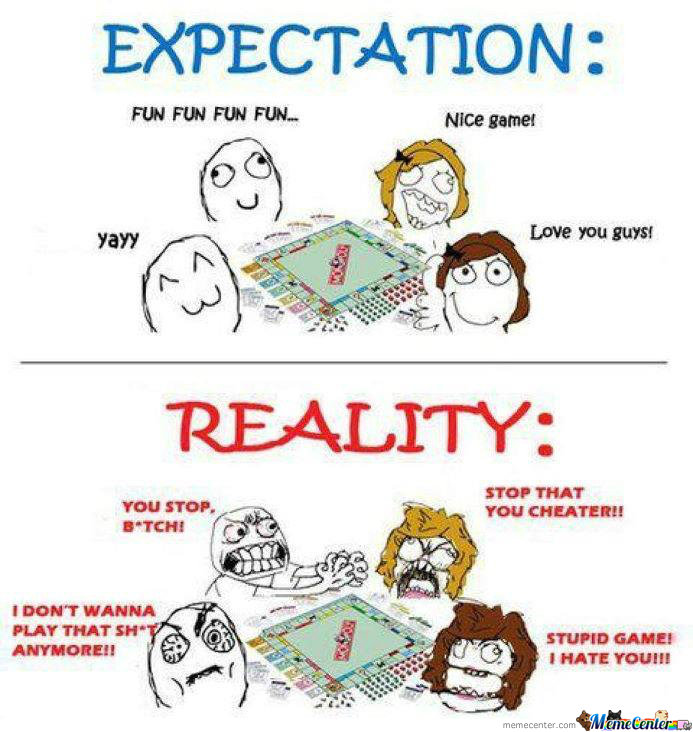 Monopoly in many ways is a Socialiser game. (We can all relate to the image above).
Monopoly in many ways is a Socialiser game. (We can all relate to the image above).
Usually within the first half hour someone has picked up Mayfair and Park Lane. (Or whatever your local equivalent is).
From that point on it’s almost a foregone conclusion that that person will win. Yet we continue to play for hours anyway.
This is because Monopoly is more about sharing the social space, sitting around a table and chatting, than it is about rolling dice and moving a tiny Hat, Shoe or Car around the board.
Socialisers also make up a larger amount of people than any of the other player types.
Yet they’re often overlooked in gamification systems in preference for previously mentioned methods.
Occasionally we’re rewarded for inviting friends to a platforms but that’s about as far as it goes.
While having friends on a platform is great, it’s collaboration that is the big draw card for Socialisers.
Given a chance they will participate in tasks when they can be shared, even things they didn’t want to do.
Opening up tasks to shared workload is be a great way to increase engagement amongst socialisers.
Give them a chance to build communities around this shared work load and they will grow your platform.
Everyone Ignores The Explorers
The player type that gets the least love in gamification systems.
Explorers thrive on knowledge, particularly exclusive knowledge, and often know a system’s tricks, quirks and loopholes.
They also tend to analyse systems and experiment, which makes them hard to design gamification systems for since, they’re more likely to spot what is going on.
Secondly, they tend to enjoy complicated systems, which as a general rule of app development, added complexity is a big no-no.
But there are suggestions for increasing Explorer engagement in apps through things like power user options.
These are a way that users, once familiar with a system, can get common tasks done faster.
Conclusion
So we can see that by understanding our users a little better we can design better gamification systems and know the why behind their various parts.
In my next post I’ll cover what types of rewards (and punishments) we can apply to a system to get the best response and engagement from our users.
(If you’re curious what type of player you are you can check it here. http://www.gamerdna.com/quizzes/bartle-test-of-gamer-psychology)
Continue the crash course…
Part 2 – 4 Powerful Reward Strategies For Gamifying Mobile Apps
Part 3 – 5 Important Approaches For Gamifying Mobile Apps
Latest posts by Ben Rejmer (see all)
- 5 No-Cost Ways To User Test Your App - June 18, 2015
- Part 3: 5 Important Approaches For Gamifying Mobile Apps - June 4, 2015
- Part 2: 4 Powerful Reward Strategies For Gamifying Mobile Apps - June 3, 2015

